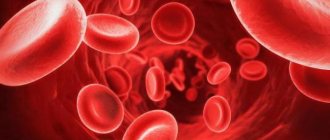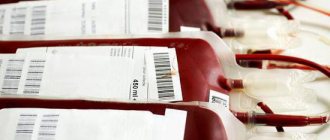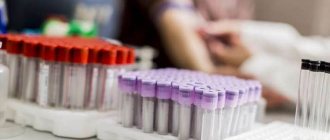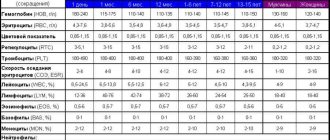Adrenaline is a hormone, biologically active substance, neurotransmitter, which is produced in the body of living beings, including humans, in the adrenal cortex. This hormone is formed from the amino acid tyrosine, which enters the body during the breakdown of protein foods. The second name for this biologically active substance is epinephrine (translated as “near the kidney” or “above the kidney”). It is called differently in different countries. In America it is known as epinephrine, in Russia - as adrenaline. However, the receptors on which adrenaline acts are called adrenergic receptors, and they are present in all organs and tissues of our body.
Receptors are divided into α-adrenergic receptors and β-adrenergic receptors; α-receptors, in turn, are divided into α1- and α2-adrenergic receptors. This kind of division is necessary in order to understand what effect produced adrenaline has on the body.
When is adrenaline released?
Adrenaline is produced in cases of stress, trauma, burns, shock, physical exertion, and emotional shocks. Its development is an adaptation process to the current situation. For example, during painful shock, thanks to adrenaline, a person does not fully feel pain. Otherwise, death would have occurred from the pain reaction.
Adrenaline is produced in order to make the body faster and stronger. In other words, this hormone mobilizes all the forces of the body.
Any living organism in nature has protective functions, one of which is called “fight or flight”. That is, the animal protective instinct is triggered during times of stress, when it is necessary to either defend or run away. This is a physiological process that occurs regardless of our desires.
Thanks to adrenaline, your mood and desire to carry out your plans increase.
Interesting fact!
For each person, the level of adrenaline is purely individual. There are people for whom this bar is quite high, and in order to keep it, they need to go to the mountains, play in casinos, and engage in extreme sports. The effect of adrenaline after the release lasts no more than five minutes, because the processes of its inactivation are activated. When the hormone level drops, apathy and depression occur. Therefore, active people need to replenish it again and again. For others, the level of this hormone is quite low, and they are satisfied with absolutely passive types of relaxation: sofa, TV, reading books. It depends on the individual characteristics of a person’s character, his temperament, hereditary factors, etc. We are all individual.
Diagnostics and treatment of stress hormones at Altimed MC
To find out what caused the increase in hormones, it is necessary to undergo a complete diagnosis of the body. This can be done quickly and painlessly here at Altimed MC. We use our own equipment for a complete diagnosis of the body.
Functional screening helps measure stress-related cortisol levels , as well as vitamin and mineral levels. With its help, you can get a complete picture of the functioning of the entire organism.
ATM Vega Test reveals hidden diseases, helps determine their severity and understand what caused them. Based on the results obtained, our specialists can create an effective treatment plan, the results of which you will notice in the first days.
Physiological effect of adrenaline on the body
Adrenaline constricts blood vessels in the skin, abdominal cavity and mucous membranes. At the same time, it dilates the blood vessels of the heart and brain. Slightly dilates the blood vessels of skeletal muscles. Thus, a redistribution of blood occurs in the body, as a result of which more blood “comes” to the brain, heart and skeletal muscles than in a normal situation.
Interesting fact!
The expression “fear has big eyes” is nothing more than a manifestation of the physiological effect of adrenaline. This hormone, acting on the radial muscle of the iris, dilates the pupil of the eye.
How are stress hormones treated at Altimed MC?
The process of reducing cortisol takes time and a comprehensive approach. Our specialists will prepare a course for you, after which you will be able to restore the normal level of cortisol in the body and thereby get rid of many discomforts (excess weight, sleep problems, and others).
To reduce stress, we recommend taking a course of treatment using our ATM TR device for transcranial magnetic stimulation. Frequency-wave processes affect the body, establish synchronization of all organs so that they work in their own rhythm. A device for electromagnetic (PEMF) therapy at home ATM Helper ML helps restore the level of stress hormones in the human body. The main thing is that you can use it in the future if you find yourself in stressful situations. Also, it has a wide range of actions and is no less effective in curing many other diseases. You will be told about this in more detail during your consultation.
Physiological response of the heart to the release of adrenaline
The effect of adrenaline on the heart is quite complex and occurs in several stages.
This occurs due to the presence of several types of receptors that perceive adrenaline.
First, the heart rate and cardiac output increase significantly, causing blood pressure to rise. At the second stage, a decrease in the number of heart contractions is observed, due to stimulation of the vagus nerve, while blood pressure temporarily stops rising. In the third stage, cardiac output increases, the number of heartbeats increases, and blood pressure levels rise. At the fourth stage, tachycardia remains, but blood pressure decreases.
With the regular release of adrenaline, there is constant stimulation of the cardiovascular system. As a result, functional myocardial hypertrophy is observed. The heart, in order to cope with the constant load, increases its muscle mass.
Negative effects of excess adrenaline
With constant or frequent release of adrenaline by the adrenal glands, they become depleted and the adrenal system as a whole is depleted. A person becomes lethargic, apathetic, weak, lacking initiative, and depressed.
An excess amount of adrenaline in the blood is observed with constant stimulation of the sympathetic nervous system: during chronic stress, during constant anxiety, fear. With excessive and frequent production of adrenaline, so-called panic attacks can occur. This is a functional state of the body in which the level of adaptive capabilities is significantly less than the level of adrenaline.
Symptoms of panic attacks:
- irrational fear of death;
- tachycardia, arrhythmia;
- pain in the heart area;
- a sharp increase in blood pressure;
- cold clammy sweat;
- dizziness;
- fainting state;
- tremor of limbs, convulsions;
- increasing shortness of breath, suffocation;
- sudden changes in body temperature;
- dry mouth.
In another way, this condition is called sympathoadrenal or vegetative crisis, vegetative storm, vegetative neurosis with a crisis course, etc. This condition is not organic. Although it is very unpleasant and painful for patients, it is absolutely functional. If the adrenaline rush continues, panic attacks will recur. This condition is treated and monitored by psychotherapists and psychiatrists together with specialized specialists. And the treatment of such patients is aimed precisely at eliminating the cause, that is, at stopping or reducing the release and effect of adrenaline on the body.
Such conditions are also observed in athletes. This may be due to excessive physical and psychological stress. This is especially true before serious competitions, when the athlete bears great responsibility. A person feels constant tension, and the body can respond to such stress with vegetative storms.
Reasons for the surge
The following situations can lead to the release of the hormone in a person:
- Getting injured;
- Shock;
- Severe pain;
- Lack of carbohydrates;
- Staying indoors or outdoors at very high temperatures or at too low temperatures;
- Intentional participation in extreme sports;
- Some cancers;
- Danger;
- Stress.
The method of eliminating the surge of the hormone depends on the cause of its occurrence. To reduce the amount of adrenaline you need to calm down. If the person himself cannot do this, he needs to consult a psychiatrist. When adrenaline is released, if necessary, you may need to consult another doctor - a traumatologist, endocrinologist and others.
Physiological response of skeletal muscles to the release of adrenaline
As described earlier, when adrenaline acts on skeletal muscles, vasodilation occurs, and the muscles receive more blood supply, and, consequently, the muscles are supplied with oxygen and nutrients. This action is extremely important for people whose lives are directly related to increased physical activity. With constant exposure to adrenaline on the body of athletes, functional hypertrophy of skeletal muscles occurs over time. In other words, muscle volume increases significantly. This occurs similarly to the previously described hypertrophy of the heart muscle.
What is cortisol?
Cortisol is the primary stress hormone that is released by the adrenal cortex whenever you experience stress. If you are chronically stressed, your body constantly releases the hormone. Chronically high cortisol is very detrimental to your cognitive and physical health, as well as your well-being. However, in the short term, the release of cortisol is very beneficial and serves as a form of protection for your body.
Chronically elevated cortisol levels are especially dangerous for your brain. In such cases, the hormone damages areas in the hippocampus, the part of the brain responsible for learning and memory.
Elevated cortisol levels have been shown to also lead to sleep problems and noticeably poorer sleep quality. This is because too much cortisol prevents you from falling asleep in the evening, and at night leads to a situation where you are in a constant state of alertness.
Important!
During bleeding, adrenaline acts on the blood coagulation system, releasing a large number of platelets, which are involved in the formation of a blood clot and stop bleeding.
Adrenaline is involved in the body's fight against foreign agents - allergens, preventing allergic reactions and their consequences. Therefore, doctors in these cases use adrenaline solution in their practice.
Adrenaline has anti-inflammatory properties. When an inflammatory focus appears, adrenaline stimulates the immune system, which produces a large number of leukocytes.
Indications for use
Adrenaline is used in many areas of medicine:
Allergology - during the occurrence of acute allergic reactions during anaphylactic shock caused by the body's reaction to allergens, and anaphylactoid situations that can occur suddenly, due to the body's reaction to factors that did not previously cause sensitization;
Ophthalmology - for the treatment of open-angle glaucoma;
Cardiology - in the treatment of cardiogenic shock;
ENT and dentistry - decongestants of the mucous membrane. Used after bleeding procedures - removal of teeth, tonsils;
Anesthesiology - because in combination with local anesthetics it prolongs the analgesic effect.
The use of adrenaline in modern medicine
In modern medicine, adrenaline is used as a medicine. It is produced in ampoules of 1 ml/1 mg. This is a fairly serious drug. Very often it is used in emergency conditions.
Main indications for use:
- heart failure;
- myocardial infarction;
- attack of bronchial asthma;
- respiratory arrest;
- acute bleeding;
- acute inflammatory reactions.
Main contraindications:
- atrial fibrillation;
- myocardial hypertrophy;
- thrombosis;
- oncological pathology;
- intestinal atony;
- bronchodilation.
Dosage and routes of administration
Epinephrine can be purchased at pharmacies as a clear solution in a pre-filled syringe. This form allows for quick, intuitive and independent administration of the drug to children and adults.
The drug with adrenaline should be injected only into the muscle located in the anterolateral part of the thigh. The injection site is then massaged to disperse the drug more quickly throughout the body.
The volume of drug administration is calculated based on the patient’s body weight. It is suggested that both children and adults weighing more than 30 kg should receive a single dose of 0.3 ml of epinephrine. Each prefilled syringe is a single-use product containing 1 ml of drug.
Although the amount of the drug recommended for a single administration, i.e. 0.3 ml, less than in a syringe, the medicine cannot be reused. If symptoms do not improve or worsen, a second, same dose may be given from the next syringe.
Children weighing less than 30 kg also need to take a dose of 0.3 ml of adrenaline, since the design of the syringe does not allow the administration of a different amount of the drug.
The advantage of a prefilled syringe is that it has a built-in lock, preventing you from injecting a larger dose of the drug than recommended. This is a huge advantage, because the condition of the patient who has to inject himself with adrenaline often interferes with clear thinking and precise movements.
The drug should be used immediately after the onset of symptoms of shock: redness of the skin, angioedema, breathing problems, cardiovascular problems and urticaria. After taking adrenaline, you should always call an ambulance.
Other routes of administration of adrenaline (inhalation or sublingual form) and doses of the drug can only be used by physicians.
Stimulation of adrenaline release
The production of adrenaline can be stimulated artificially: sports, physical activity, emotional shocks, playing in a casino. There are a number of professions that are inextricably linked with the constant production of adrenaline. These are pilots, firefighters, doctors, rescuers, businessmen. The latter, although not associated with a risk to life, however, the risk of losing large sums stimulates the release of no less amount of adrenaline. This also includes professional players.
References
- Neuroendocrine tumors. Clinical recommendations - approved. Ministry of Health of the Russian Federation, 2021.
- Mokhort, T.V., Velesevich, E.I., Mokhort, E.G. Pheochromocytoma: modern approaches to diagnosis and treatment. — International reviews: clinical practice and health, 2021. — No. 1(19). — P. 4-23.
- Verly, I., Leen, R., Meinsma, J. et al. Catecholamine excretion profiles identify clinical subgroup sofneuroblastoma patients - European journal of cancer, 2021. - Vol.111. — P. 21-29.









